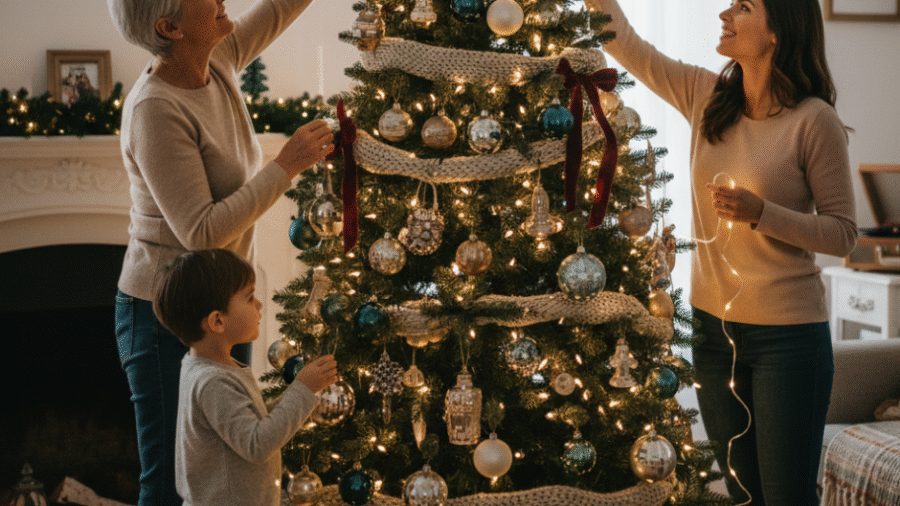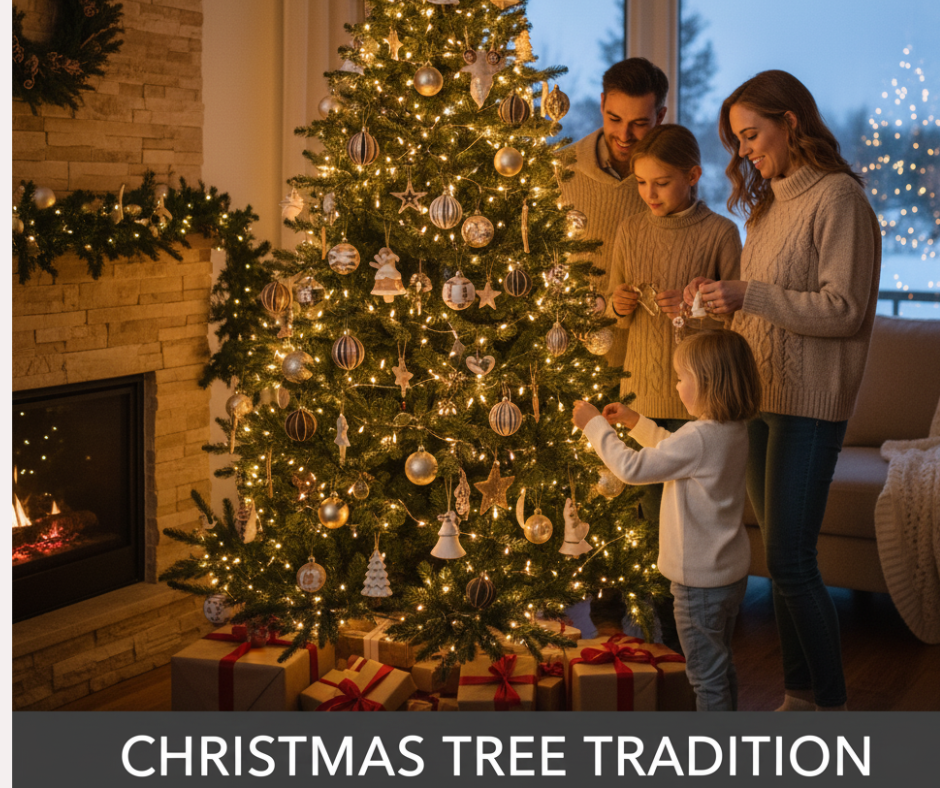The Christmas Tree Tradition is a central symbol of the festive season, instantly conjuring images of twinkling lights, glittering ornaments, and joyful celebrations. How did the evergreen tree become synonymous with Christmas, and why does it continue to hold such powerful cultural and religious significance around the world?
In this comprehensive article, we explore where the Christmas tree tradition comes from, uncovering its ancient pagan roots, Christian adaptations, and its evolution into a treasured holiday custom.
Ancient Origins: Evergreen Trees in Winter Festivals
-
Pagans and Druids: Northern European and Celtic peoples decorated their homes with evergreen boughs to symbolize eternal life and the hope of spring, defending against evil spirits and winter’s chill.
-
Romans: During their mid-December festival Saturnalia, Romans decorated homes with greenery, candles, and lights as part of seasonal celebrations.
-
Egyptians: Decorated their homes with green palm rushes during the solstice.
Early Christian Adaptations
As Christianity spread through Europe, many pagan customs were adapted into Christmas Tree Tradition observances to ease conversion and blend traditions.
-
The evergreen tree became a symbol of life in Christ, representing eternal hope and the promise of resurrection.
-
Medieval churches often used “Paradise trees” during mystery plays depicting the Garden of Eden, decorated with apples symbolizing the forbidden fruit.
-
The tradition of adorning a tree with candles or lights symbolized Christ as the light of the world, illuminating the dark winter season.
The Birth of the Modern Christmas Tree in Germany
The 16th century in Germany saw the first widespread indoor use of decorated Christmas trees:
-
Families brought fir trees indoors and decorated them with fruits, nuts, flowers, candles, and paper decorations.
-
The Protestant reformer Martin Luther is famously said to have added candles to a tree to emulate the sparkling stars.
-
The Christmas tree tradition spread through Germanic regions with regional variations.
Spread Across Europe and to America
United Kingdom
-
The tradition became fashionable in Britain during the 19th century, popularized after Queen Victoria and Prince Albert decorated a Christmas tree at Windsor Castle.
-
Newspapers published images which sparked widespread emulation.
United States
-
German immigrants brought the tradition to America, where it grew slowly throughout the 18th and 19th centuries.
-
By the mid-19th century, Christmas trees became a favored holiday decoration in many American homes.
Evolution of Decorations and Practices
-
Early decorations consisted of edible items (apples, nuts).
-
Glass ornaments became popular in 19th-century Germany.
-
The advent of electric Christmas lights (invented in the early 20th century) revolutionized tree decorating.
-
Today’s décor includes ornaments, tinsel, ribbons, tree toppers, and themes unique to individual families and cultures.
Symbolic Meaning and Cultural Importance
The Christmas tree symbolizes more than decoration: Christmas Tree Tradition
-
Evergreen continues to represent eternal life and renewal.
-
Lights and candles symbolize Jesus Christ’s role as the light amid darkness.
-
The collective act of decorating heralds family unity and festive joy.
-
Public Christmas tree lightings mark community celebration.
Contemporary Global Tradition
Today, Christmas trees are embraced worldwide, from traditional firs in Europe and America to creatively adapted trees in tropical and non-Christian regions. Ilumination events, charitable initiatives, and public displays underscore its place as a unifying festive symbol.
Read More: Where Does the Christmas Tree Tradition Come From? Tracing the Roots of a Beloved Holiday Symbol
Conclusion
The Christmas tree tradition arises from ancient solstice festivals reinterpreted by Christian symbolism and nurtured through European cultural practices. Its enduring appeal lies in its rich layers of meaning—hope, life, light, and unity—that resonate deeply every holiday season.
From humble pagan boughs to dazzling urban displays, the Christmas tree remains a living connection to our shared human heritage and festive spirit.



Add a Comment